The body needs a variety of nutrients to develop and strengthen immunity. Protein-rich foods are essential for our good health. Each nutrient has a specialization and significance all of its own. Protein-rich diets are necessary for our bodies to gain energy, repair everyday muscle damage, and recover from illness swiftly. Before and after an exercise, we should eat healthy meals to help our bodies rehydrate and reenergize as quickly as possible.
So, to be healthy, physicians frequently advise eating a balanced diet. A balanced diet must include protein. Every component of the body, including the health of the hair, is influenced by protein. In addition to receiving incredible health advantages, it aids in bodily strengthening.
People’s weight is rising quickly and they are surrounded by various ailments in today’s frantic and erratic lifestyle. Consume meals high in protein to maintain a healthy weight and to have more energy. The function of protein in the body, its advantages, and foods high in protein will all be covered in this article.
What is protein?
Large, intricate molecules known as proteins are essential to the structure and operation of living things. It is composed of larger constituents known as amino acids that are connected in extensive chains. Along with carbs and fats, they are one of the three basic macronutrients and are critical for the development, upkeep, and proper operation of all living things, from bacteria to people.
The lengthy chains of smaller components known as amino acids that make up proteins are connected in a certain order. A variety of proteins may be created by combining any two of the 20 distinct amino acids in different ways. A protein’s distinct structure and function are determined by the order of its amino acids. Your body uses protein for a variety of purposes, including:
1. Constructing and mending your muscles, bones, skin, hair, and other tissues.
2. Aiding in the production of antibodies that help your body fight infections and illness.
3. Producing enzymes to quicken chemical processes within your cells.
4. Using hormones to communicate between your cells, tissues, and organs.
5. Moving and preserving molecules like iron, oxygen, and other substances in your blood.
Protein food chart:
1. Eggs:

Eggs are a fantastic protein source. Additionally, the protein in eggs has antioxidant qualities. the protein found in egg yolks, specifically. As a result, it is thought to be advantageous for cardiovascular illnesses. Due to its low calorie content, folks who eat it for breakfast are better able to manage their weight. Because eggs include protein as well as other elements like vitamins and minerals, they are crucial for general health. Particularly egg whites are excellent for muscles. Eating eggs does not make you more likely to gain weight or have high cholesterol.
Nutritional value of Eggs:
A hundred grams of whole, raw, fresh eggs (about two eggs) provide 12.5 grams of protein. Protein content in egg white and membrane egg yolk is 10.90 grams and 15.9 grams, respectively. Depending on the breed of chicken, eggs can have a variety of nutritional benefits. The amount of protein in a medium-sized cooked egg (50 g) is 6.29 g.
2. Milk:
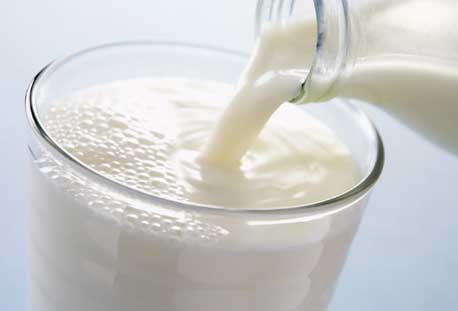 Protein-rich milk is a nutritional powerhouse. Casein and whey are the two main forms of protein that are present. About 80% of milk’s protein is casein, a slow-digesting protein with a prolonged release of amino acids that is perfect for muscle building and recuperation. The remaining 20% is made up primarily of whey, a fast-digesting protein that is well-liked for post-workout recovery since it swiftly provides amino acids to muscles.
Protein-rich milk is a nutritional powerhouse. Casein and whey are the two main forms of protein that are present. About 80% of milk’s protein is casein, a slow-digesting protein with a prolonged release of amino acids that is perfect for muscle building and recuperation. The remaining 20% is made up primarily of whey, a fast-digesting protein that is well-liked for post-workout recovery since it swiftly provides amino acids to muscles.
Given that it includes all nine necessary amino acids, milk protein is regarded as a complete protein. It is therefore a fantastic option for vegetarians and athletes who want to boost muscular growth. Milk protein can also aid in weight management by encouraging a sense of fullness. No matter if it’s in its natural state or used as an ingredient.
Nutritional value of Milk:
100 grams milk contains 3.4 grams of protein and 1% of fat.
3. Nuts:
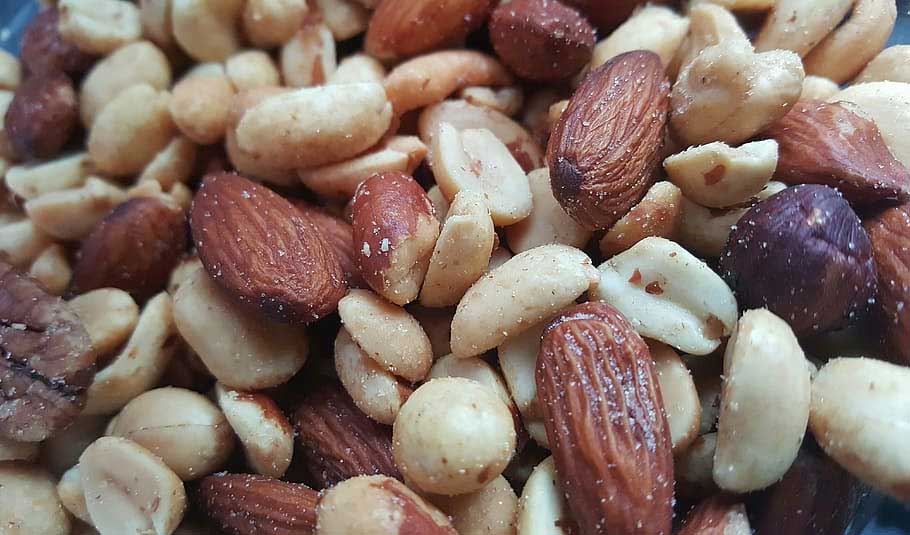 Nuts include a lot of additional nutrients in addition to protein. Magnesium, vitamin E, fiber, and monounsaturated fat are all present. They improve metabolism when consumed. Its consumption has been demonstrated in studies to lessen cravings and hunger.
Nuts include a lot of additional nutrients in addition to protein. Magnesium, vitamin E, fiber, and monounsaturated fat are all present. They improve metabolism when consumed. Its consumption has been demonstrated in studies to lessen cravings and hunger.
Nutritional value of Nuts:
Nuts’ nutritional content includes 21.3 grams of protein.
4. Fish:
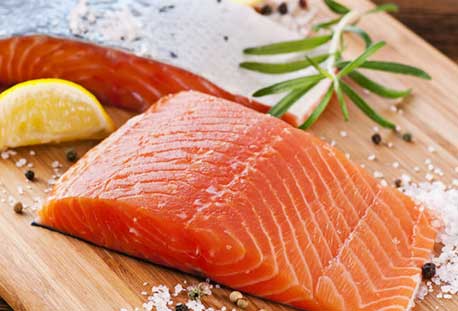 With a low-fat level and high protein content, fish is a healthy source of protein. At least twice a week, fish should be a part of a balanced diet. Fish helps lower blood pressure and lowers the risk of heart attack and stroke since it is high in protein, vitamins, and other minerals. Omega-3 fatty acids, which are found in fish, are crucial for newborn growth, particularly for the eyes and neurological system. It lowers the risk of depression, Alzheimer’s disease, ADHD, and dementia (a brain illness), a disease connected to memory.
With a low-fat level and high protein content, fish is a healthy source of protein. At least twice a week, fish should be a part of a balanced diet. Fish helps lower blood pressure and lowers the risk of heart attack and stroke since it is high in protein, vitamins, and other minerals. Omega-3 fatty acids, which are found in fish, are crucial for newborn growth, particularly for the eyes and neurological system. It lowers the risk of depression, Alzheimer’s disease, ADHD, and dementia (a brain illness), a disease connected to memory.
Nutritional value of Fish:
Fish comes in a variety of varieties, and the most of them are high in protein. 18.99 grams of protein is present in couscous fish. Carp weighs 17.83 grams, salmon 19.93 grams, and cisco 18.99 grams. In addition to protein, fish has a lot of other nutrients.
5. Meat:
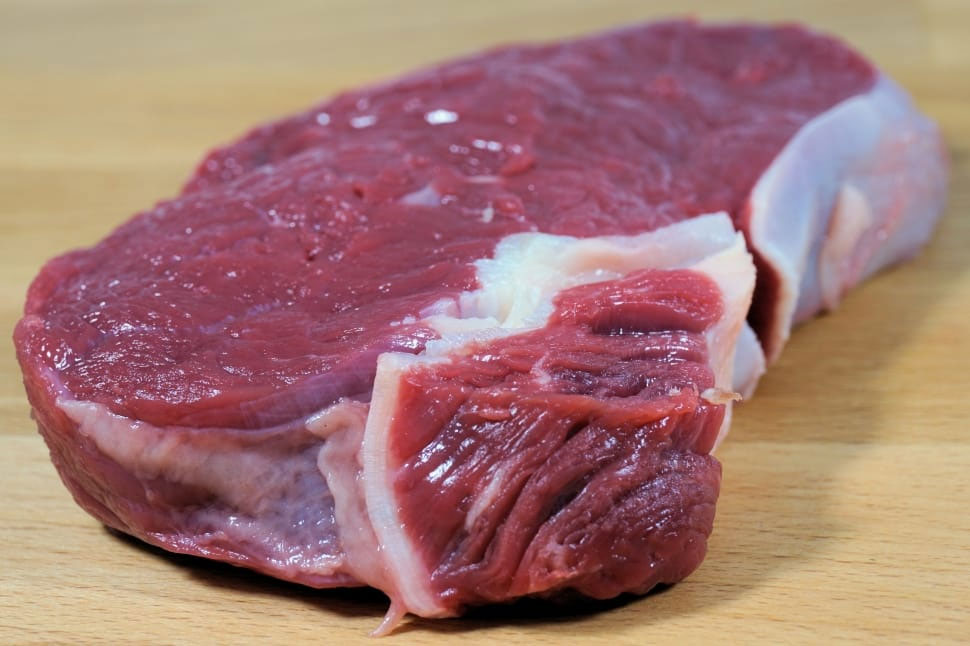 Non-vegetarian and foods high in protein are included in meat. Because it contains a lot of protein and little carbs, it lowers the glycemic index. As a result, it helps prevent cancer, diabetes, and becoming overweight.
Non-vegetarian and foods high in protein are included in meat. Because it contains a lot of protein and little carbs, it lowers the glycemic index. As a result, it helps prevent cancer, diabetes, and becoming overweight.
Nutritional value of Meat:
The protein content per 100 grams of beef is 17.86 grams. Additionally, meat is a significant source of a number of minerals, including folic acid, vitamin B12, selenium, vitamin A, and iron.
6. Lentils:
 Protein and essential amino acids are abundant in lentils. These lentils, which are high in polyphenols, are healthy. Lentils possess antioxidant, antibacterial, antifungal, antiviral, cardioprotective, anti-inflammatory, antidiabetic, anticancer, and anti-obesity properties because to their polyphenol content. It contains polyphenols, which assist to balance out bad and good cholesterol, preventing coronary artery disease and heart disease.
Protein and essential amino acids are abundant in lentils. These lentils, which are high in polyphenols, are healthy. Lentils possess antioxidant, antibacterial, antifungal, antiviral, cardioprotective, anti-inflammatory, antidiabetic, anticancer, and anti-obesity properties because to their polyphenol content. It contains polyphenols, which assist to balance out bad and good cholesterol, preventing coronary artery disease and heart disease.
Nutritional value of Lentils:
Each 100 grams of lentils has 28.57 grams of protein.
7. Quinoa:
 Among whole grains, quinoa is one. Along with several healthy compounds, such as vitamins, minerals, fiber, polyunsaturated fatty acids, and amino acids, it also includes protein. Since quinoa is gluten-free and helps with digestion, it has a greater protein content than other grains. Because of the dietary fiber in it, cholesterol and lipids are not absorbed into the body, which aids in regulating these substances.
Among whole grains, quinoa is one. Along with several healthy compounds, such as vitamins, minerals, fiber, polyunsaturated fatty acids, and amino acids, it also includes protein. Since quinoa is gluten-free and helps with digestion, it has a greater protein content than other grains. Because of the dietary fiber in it, cholesterol and lipids are not absorbed into the body, which aids in regulating these substances.
Additionally, this fiber lessens the likelihood and intensity of inflammation and gastrointestinal illnesses. Vitamin K, which is abundant in quinoa and is necessary for bettering eyesight by controlling metabolism, regulating cell growth and development, preventing oxidative stress, and other physiological functions.
Nutritional value of Quinoa:
Quinoa has a nutritional value of 5.71 grams of protein per 100 grams.
8. Peanuts:
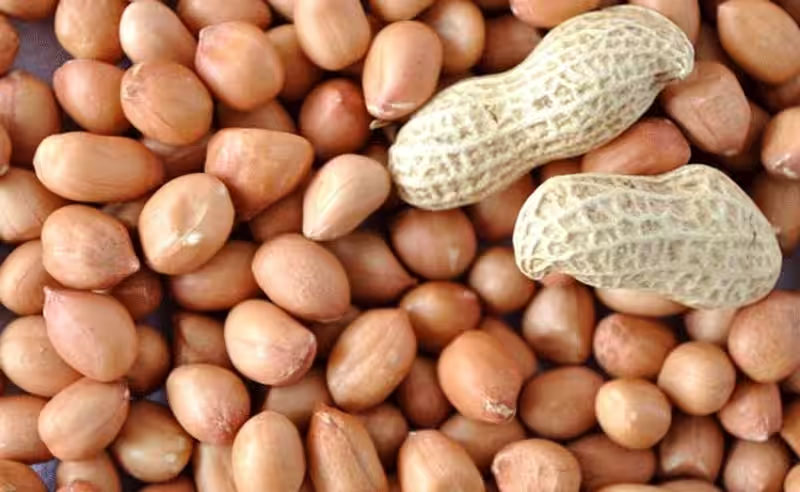 Another meal high in protein is the peanut. Fiber, polyphenols, antioxidants, vitamins, and minerals are also included in addition to protein. For a healthy existence, all of these are necessary. The cholesterol level in the blood is managed by peanuts, which prevent the body from absorbing cholesterol. Peanuts are advised for persons who are undernourished to offer appropriate nourishment due to the numerous nutrients they contain.
Another meal high in protein is the peanut. Fiber, polyphenols, antioxidants, vitamins, and minerals are also included in addition to protein. For a healthy existence, all of these are necessary. The cholesterol level in the blood is managed by peanuts, which prevent the body from absorbing cholesterol. Peanuts are advised for persons who are undernourished to offer appropriate nourishment due to the numerous nutrients they contain.
Nutritional value of Peanuts:
100 grams of peanuts provide 25.8 grams of protein.
9. Walnuts:
 They are regarded as a brain food. It is abundant in omega-3 fatty acids and protein. It is excellent for maintaining brain health. This fatty acid found in walnuts helps with memory enhancement and increases one’s capacity for learning. In addition to lessening the effects of oxidants and inflammation on brain cells, the polyphenolic chemicals in walnuts also enhance inter-neuronal signaling, the process by which cells communicate with one another.
They are regarded as a brain food. It is abundant in omega-3 fatty acids and protein. It is excellent for maintaining brain health. This fatty acid found in walnuts helps with memory enhancement and increases one’s capacity for learning. In addition to lessening the effects of oxidants and inflammation on brain cells, the polyphenolic chemicals in walnuts also enhance inter-neuronal signaling, the process by which cells communicate with one another.
Nutritional value of Walnuts:
Each 100 grams of walnuts has 15.23 grams of protein.
10. Avocado:
 The word “avocado” also refers to elements high in protein. Foods provide all the nutrients, including protein, fiber, salt, magnesium, potassium, vitamins A, C, E, K1, B-6, and B-3, and folate. It is advised to eat no more than 30 grams of this fruit.
The word “avocado” also refers to elements high in protein. Foods provide all the nutrients, including protein, fiber, salt, magnesium, potassium, vitamins A, C, E, K1, B-6, and B-3, and folate. It is advised to eat no more than 30 grams of this fruit.
Avocados are beneficial for heart health, according to study. Due to the fact that it includes a high proportion of unsaturated and a low proportion of saturated fatty acids, it has a good impact on the blood lipid profile and aids in maintaining heart health. Avocados’ potassium and lutein assist maintain healthy blood pressure and reduce oxidative stress.
Nutritional value of Avocado:
It contains 2 gm protein on every 100 gm of avocados.
11. Broccoli:
 On the list of foods high in protein is broccoli. Along with protein, it also includes significant levels of selenium, minerals, and glucosinolates chemicals. By boosting the body’s supply of the heart-protective protein thioredoxin, both of these contribute to heart health. Eating broccoli can help obese people maintain a healthy liver. Broccoli consumption helps stop liver damage. Additionally, it aids in liver tumor prevention. It is healthy for the body to consume half a cup of broccoli every day.
On the list of foods high in protein is broccoli. Along with protein, it also includes significant levels of selenium, minerals, and glucosinolates chemicals. By boosting the body’s supply of the heart-protective protein thioredoxin, both of these contribute to heart health. Eating broccoli can help obese people maintain a healthy liver. Broccoli consumption helps stop liver damage. Additionally, it aids in liver tumor prevention. It is healthy for the body to consume half a cup of broccoli every day.
Nutritional value of Broccoli:
Broccoli is another vegetable that is high in protein that may be consumed. 1.18 grams of protein are present in 100 grams, or around 1.5 cups, of broccoli.
12. Green peas:
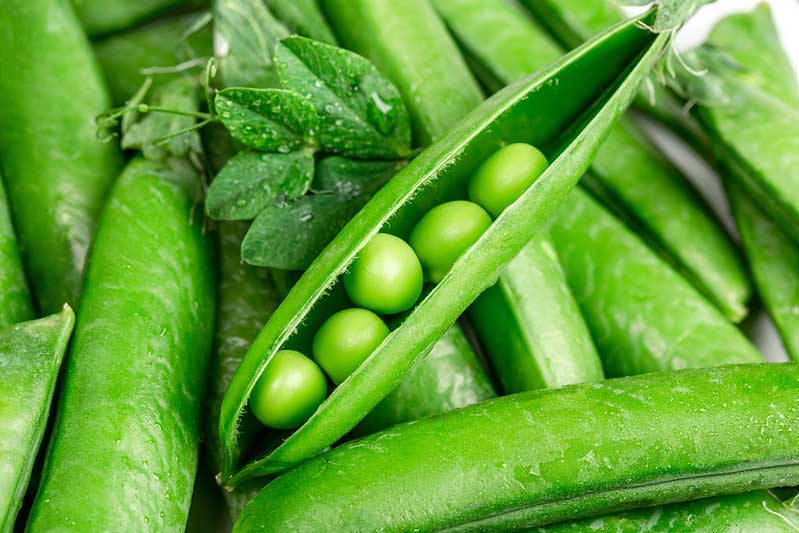 This is one of the foods high in protein. In addition to protein, it also has fiber, carbohydrates, and a variety of phytonutrients. Due to the chemicals found in peas, they have antioxidant, antibacterial, antifungal, anti-diabetic, anti-hypercholesterolemia, and anti-inflammatory properties. Additionally, it has been shown that beans contain anti-carcinogenic effects. Assists in cancer prevention.
This is one of the foods high in protein. In addition to protein, it also has fiber, carbohydrates, and a variety of phytonutrients. Due to the chemicals found in peas, they have antioxidant, antibacterial, antifungal, anti-diabetic, anti-hypercholesterolemia, and anti-inflammatory properties. Additionally, it has been shown that beans contain anti-carcinogenic effects. Assists in cancer prevention.
Nutritional value of Green peas:
100 grams of green peas have 16.89 grams of protein.
13. Oats:
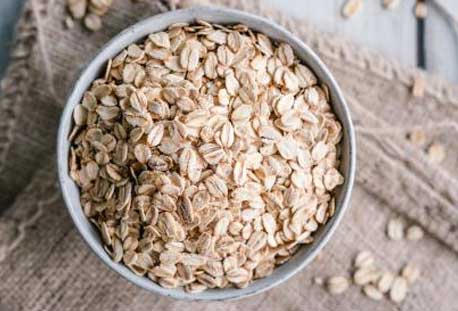 Oats are also among the protein-rich foods. It contains protein as well as beta-glucan. Consuming 3 grams of beta-glucan per day helps protect against cardiovascular problems. Also, eating oats helps lower bad cholesterol (LDL) and increase good (HDL) cholesterol, which keeps cholesterol under control.
Oats are also among the protein-rich foods. It contains protein as well as beta-glucan. Consuming 3 grams of beta-glucan per day helps protect against cardiovascular problems. Also, eating oats helps lower bad cholesterol (LDL) and increase good (HDL) cholesterol, which keeps cholesterol under control.
Nutritional value of Oats:
Oats contain 12.5 grams of protein per 100 grams.
14. Greek Yogurt:
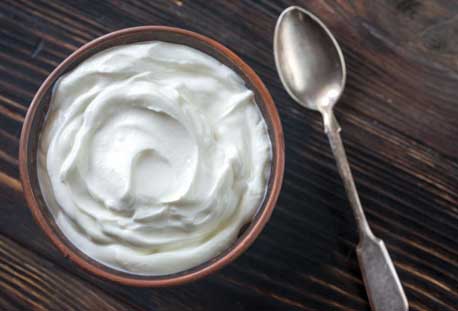 Greek yogurt is what’s left over after the surplus whey is taken out of the yogurt. The white liquid that is expelled after consuming milk curd or curd is called whey. Compared to conventional yogurt, it is somewhat sour, creamier, and thicker. You may incorporate this Greek yogurt into your diet as one of the foods high in protein. In comparison to milk and plain yogurt, it has higher protein. It encourages bone, water, and connective tissue in addition to fat to boost strength, build muscle mass, and preserve lean mass.
Greek yogurt is what’s left over after the surplus whey is taken out of the yogurt. The white liquid that is expelled after consuming milk curd or curd is called whey. Compared to conventional yogurt, it is somewhat sour, creamier, and thicker. You may incorporate this Greek yogurt into your diet as one of the foods high in protein. In comparison to milk and plain yogurt, it has higher protein. It encourages bone, water, and connective tissue in addition to fat to boost strength, build muscle mass, and preserve lean mass.
Nutritional value of Greek yogurt:
Greek yogurt is high in protein, with 9.95 grams per 100 grams.
15. Chia seeds:
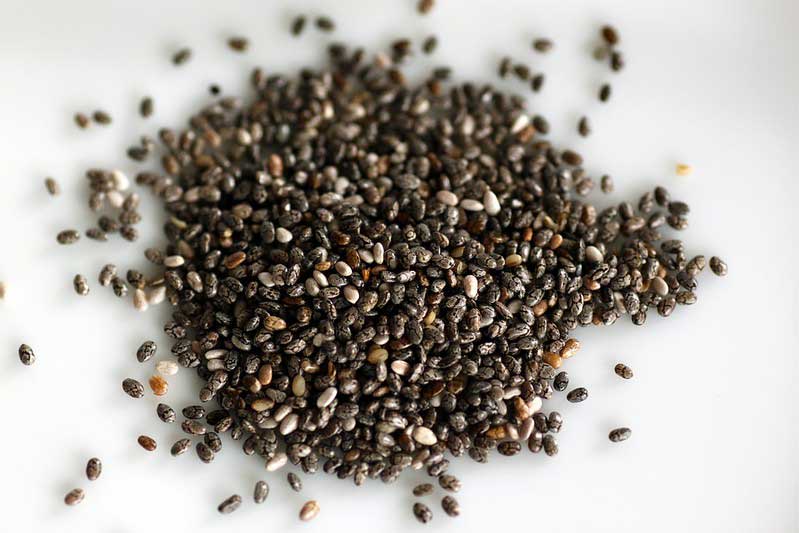 In addition to soluble dietary fiber and polyunsaturated fatty acids like omega-3 and omega-6, chia seeds are a rich source of protein. Protein, phytochemicals, and antioxidants are all abundant in chia. Because of this, using it can help prevent and manage conditions including diabetes, cancer, high blood pressure, heart disease, and obesity.
In addition to soluble dietary fiber and polyunsaturated fatty acids like omega-3 and omega-6, chia seeds are a rich source of protein. Protein, phytochemicals, and antioxidants are all abundant in chia. Because of this, using it can help prevent and manage conditions including diabetes, cancer, high blood pressure, heart disease, and obesity.
Nutritional value of Chia seeds:
Protein is included in 15.38 grams in chia seeds.
16. Pecan Butter:
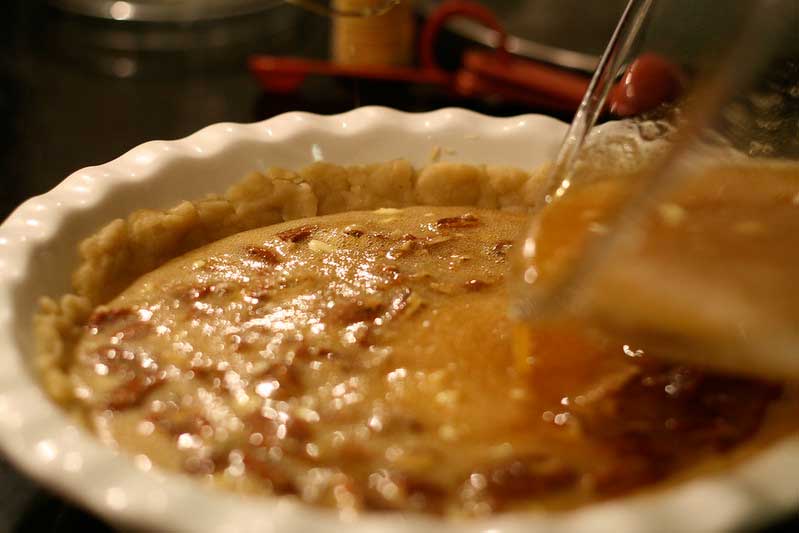 A nut comparable to walnuts is the pecan. Because it includes so many nutrients, pecan butter is also highly advantageous. Pecan butter is high in iron, calcium, and fiber in addition to protein. The calcium in it, which strengthens the bones and fiber, is helpful for the digestive system even if there is no scientific research on its health advantages.
A nut comparable to walnuts is the pecan. Because it includes so many nutrients, pecan butter is also highly advantageous. Pecan butter is high in iron, calcium, and fiber in addition to protein. The calcium in it, which strengthens the bones and fiber, is helpful for the digestive system even if there is no scientific research on its health advantages.
Nutritional value of Pecan Butter:
9.68 grams of protein are included in 100 grams of pecan butter.
Apart from the above foods, there are many other good high-protein foods such as Black beans, Lima beans, Salmon, Cauliflower, Chinese cabbage, Tuna, Tempeh, Spirulina, Hemp seeds, Sun-dried tomatoes, Guava, Artichokes, Peas, Bison, Turkey, Chickpeas, Quinoa, Cottage cheese, Lentils, Pumpkin seeds, Pistachios, Halibut, Asparagus, Brussel sprouts, Spelt, Teff, etc. You can also eat these foods for protein. But yes, if you are allergic to any of these protein-rich foods, avoid them and definitely consult your doctor.
Here is a list of foods by protein content at Wikipedia.
nethun
I am Md. Shahriar Pervez. I am a professional blogger and Youtuber. I complete my graduate from AIUB. Please visit this blog to get more information. SUBSCRIBE to this website and stay with us.




